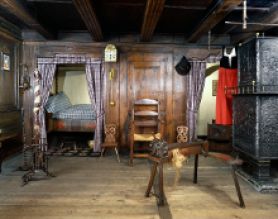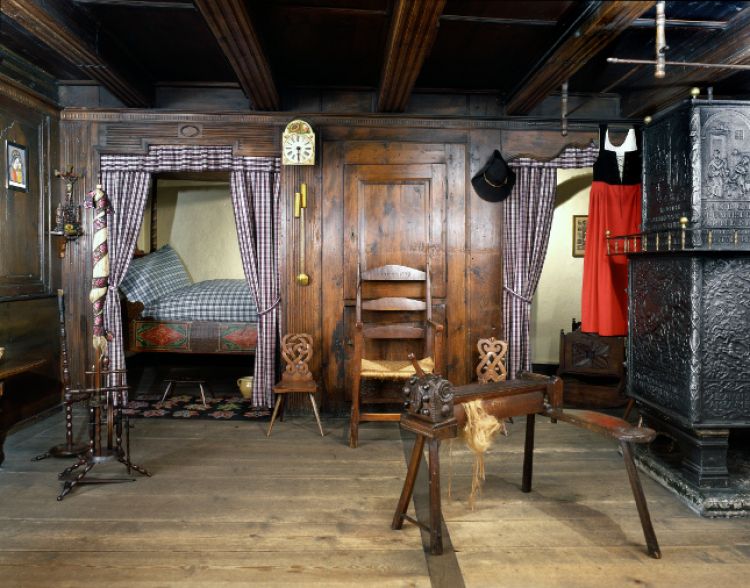"Stùb" at Wintzenheim

Reconstructed at the Alsatian Museum in 1912, this "shared space" living room dating from the 19th century comes from a farm in the Kochersberg region near Strasbourg. At the back of the room is a recess or bed-alcove closed off by a wooden partition, to which are fixed a clock with a painted dial and a cupboard. In the partition are two openings, the first of which giving access to the master bed with a thick pillow and a quilt covered with kelsch (chequered hemp fabric) and the second to the cradle of the last-born infant, benefiting from the warmth of the stove.
The Stùb brought the family together for meals and gatherings on winter evenings. The members of the family applied themselves to their various activities, especially the women, spinning or grinding hemp to separate the fibres. Thus the Stùb was a dining room, a living room, a reception room, a bedroom and a workshop.
Calling it a Stùb indicated that the room was heated. In fact it was generally the only room in the house to have a tiled or cast iron stove. Stùb (German Stube) is etymologically the same word as English "stove", in French "poële", also formerly a heated room. The other rooms, unheated in winter, were called Zìmmer or Kàmmer.
